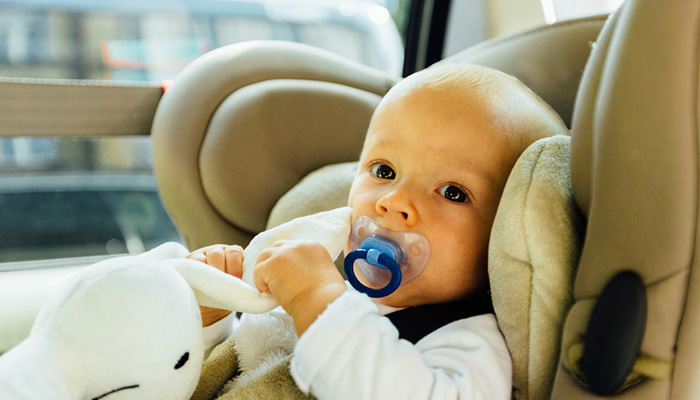Believe it or not, winter is upon us again. The days of throwing on flip flops and running out the door are coming to an end. We are spending extra time in the morning adding layers of clothing as the temperatures drop. It’s a good time to review how to keep kids safe in a car seat. While we want our little ones to stay warm, there are precautions we need to take to make sure our car seats aren’t being compromised.
The American Academy of Pediatrics offers 10 safety tips for keeping children safe while traveling during cold weather months.
- Store the carrier portion of infant seats inside the house when not in use. Keeping the seat at room temperature will reduce the loss of the child’s body heat in the car.
- If you are planning to head out the door with your baby in tow on winter mornings, get an early start. You have a lot to assemble, and your baby may not be the most cooperative.
- Dress your child in thin layers. Start with close-fitting layers on the bottom, like tights, leggings, and long-sleeved bodysuits. Then add pants and a warmer top, like a sweater or thermal-knit shirt. Your child can wear a thin fleece jacket over the top. In very cold weather, long underwear is also a warm and safe layering option. As a rule of thumb, infants should wear one more layer than adults. If you have a hat and a coat on, your infant will probably need a hat, coat, and blanket.
- Don’t forget hats, mittens, and socks or booties. These help keep kids warm without interfering with car seat straps. If your child is a thumb sucker, consider half-gloves with open fingers or keep an extra pair or two of mittens handy — once they get wet they’ll make your child colder rather than warmer.
- Tighten the straps of the car seat harness. Even if your child looks snuggly bundled up in the car seat, multiple layers may make it difficult to tighten the harness enough. If you can pinch the straps of the car seat harness, then it needs to be tightened to fit snugly against your child’s chest.
- Use a coat or blanket over the straps. You can add a blanket over the top of the harness straps or put your child’s winter coat on backwards (over the buckled harness straps) after he or she is buckled up. Some parents prefer products such as poncho-style coats or jackets that zip down the sides so the back can flip forward over the harness. Keep in mind that the top layer should be removable so your baby doesn’t get too hot after the car warms up.
- Use a car seat cover ONLY if it does not have a layer under the baby. Nothing should ever go underneath your child’s body or between her body and the harness straps. Be sure to leave baby’s face uncovered to avoid trapped air and re-breathing.
- Remember, if the item did not come with the car seat, it has not been crash tested and may interfere with the protection provided in a crash. Never use sleeping bag inserts or other stroller accessories in the car seat.
- Pack an emergency bag for your car. Keep extra blankets, dry clothing, hats and gloves, and non-perishable snacks in your car in case of an on-road emergency or your child gets wet on a winter outing.
- Leave plenty of time to get to where you are going. Driving in wintry conditions will require you to slow down and be extra cautious.
If you have questions about winter car seat safety or any car seat questions, please feel free to reach out to your provider at South Lake Pediatrics. We are here to help!

Leave a Reply